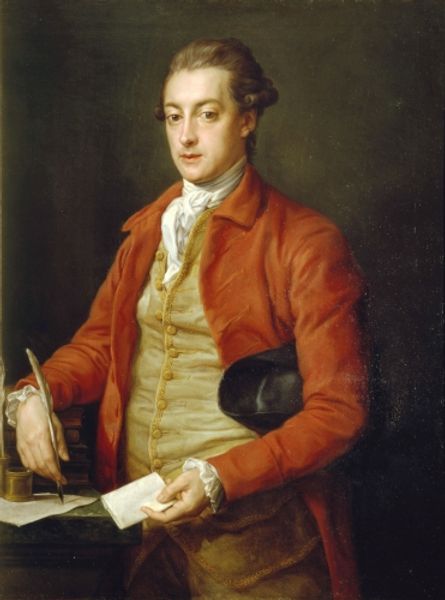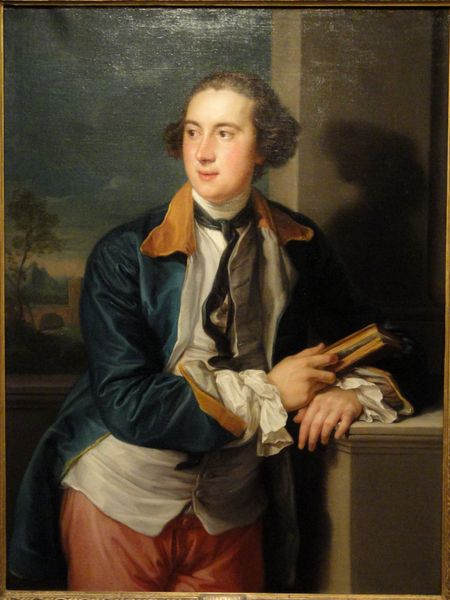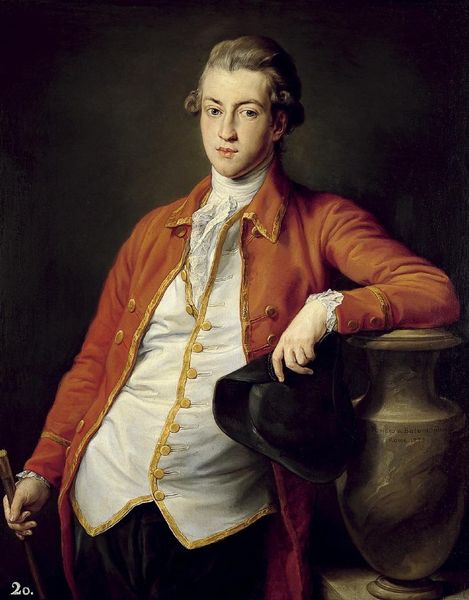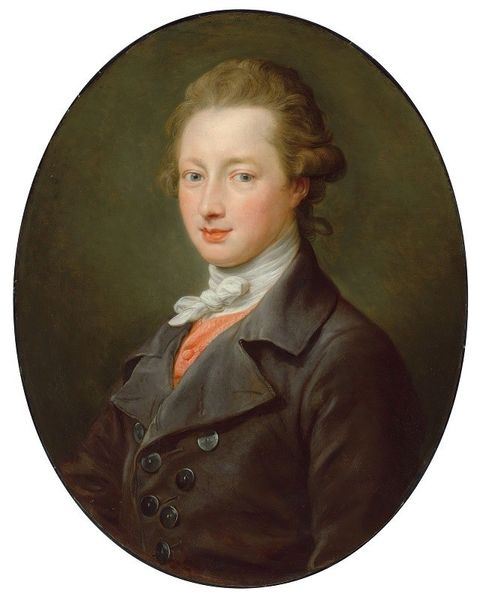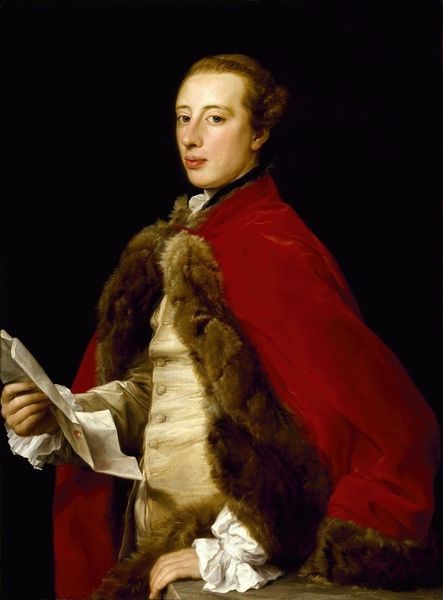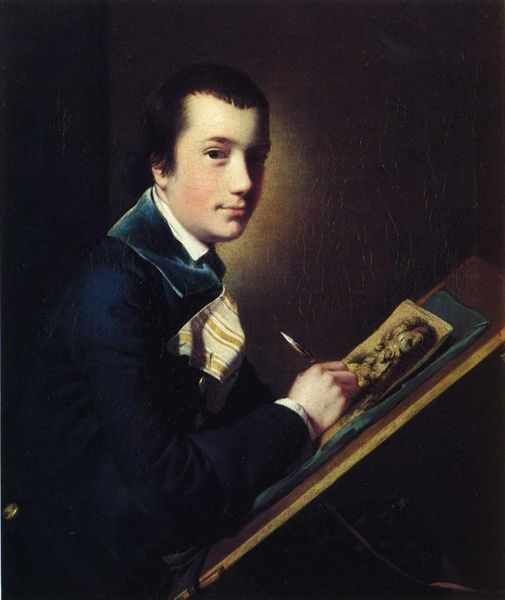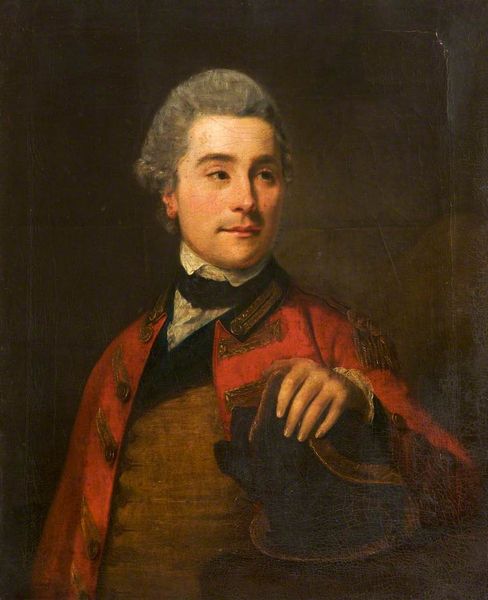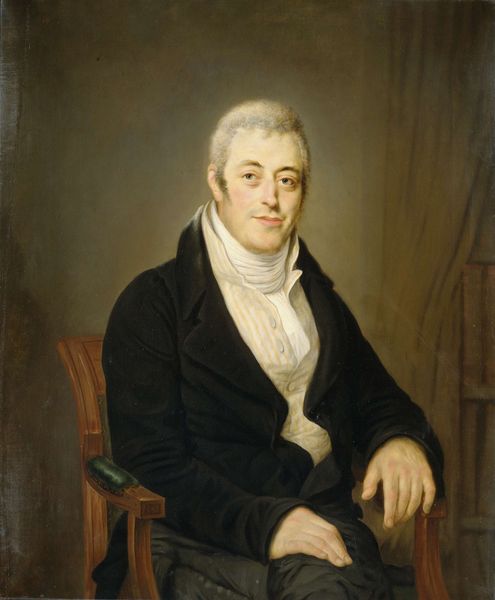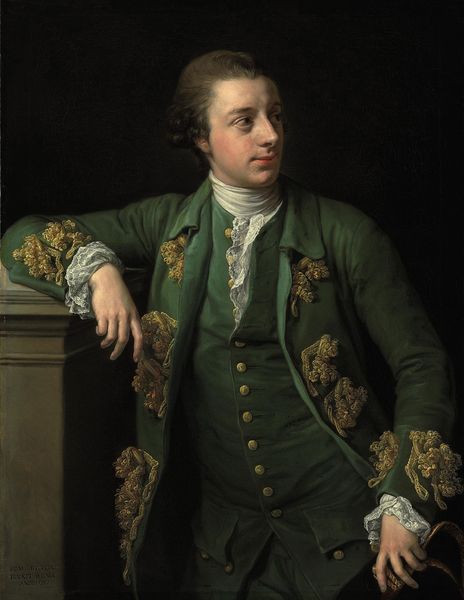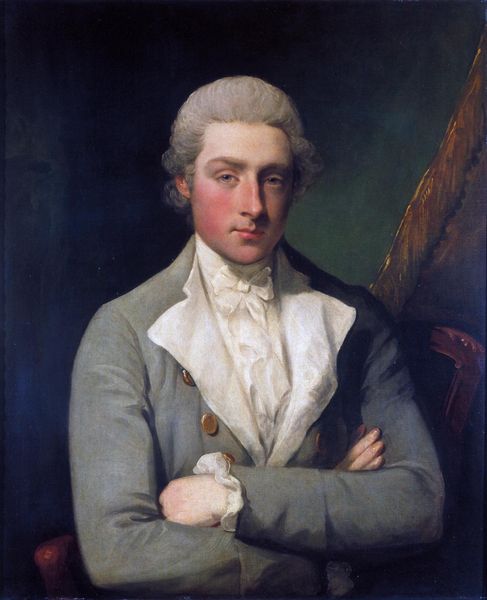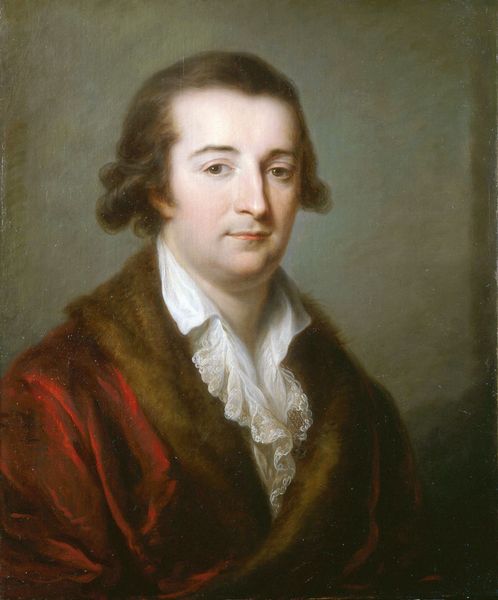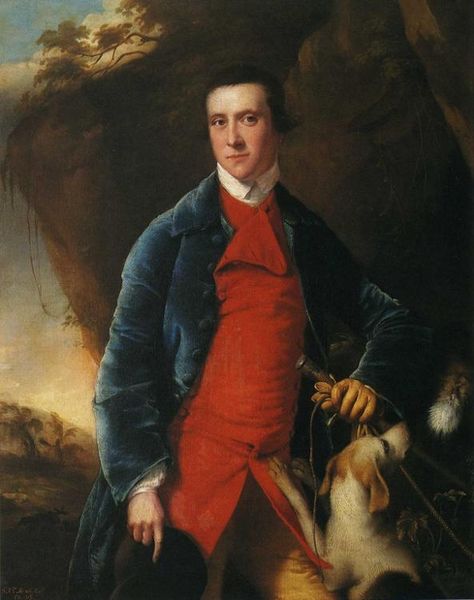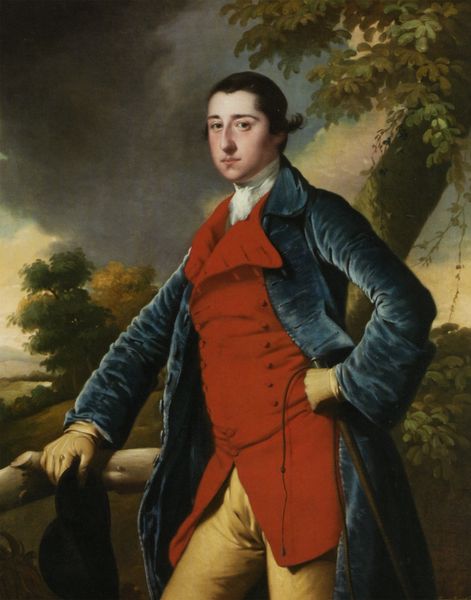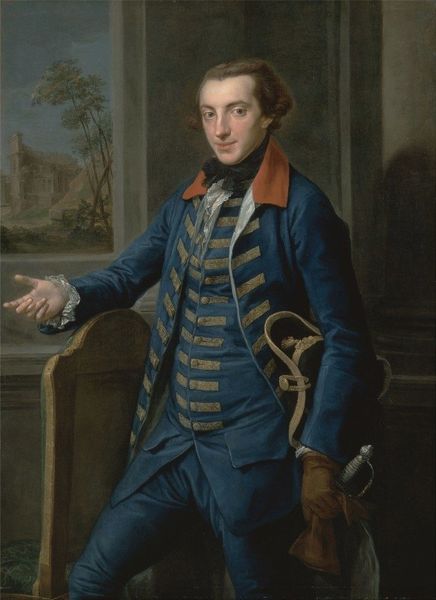
Copyright: Public domain
Pompeo Batoni painted this portrait of Richard Aldworth Neville, later Second Baron Braybrooke, in oil on canvas in the 18th century. It captures the essence of aristocratic identity and the Grand Tour tradition. Painted in Italy, this portrait reflects the cultural exchanges that shaped the identities of young British nobles. Neville's confident pose, lavish clothing, and fashionable wig, are all visual cues of his social status. Artists like Batoni catered to the desires of wealthy tourists who commissioned portraits to commemorate their travels and affirm their place in the elite circles of British society. The portraits served as symbols of cultural sophistication. To understand this work fully, we need to consider the historical context in which it was created, examining sources such as travel journals, correspondence, and financial records. In doing so, we can explore the complex relationship between art, patronage, and identity formation in 18th-century Europe.
Comments
No comments
Be the first to comment and join the conversation on the ultimate creative platform.
